Day trips from Athens - Places to visit and excursions around Athens
- Before arriving in Athens
- How to get to Athens - Getting to Athens by train, plane, car, ship or bus
- Public Transport in Athens - Getting around Athens
- Cost of Living in Athens
- Save money in Athens - Tips for living in Athens on a student budget
- Accommodation for students in Athens - Top tips and advice
- Athens neighbourhoods - The most important districts of Athens
- Greek Cuisine - The gastronomy of Greece and traditional dishes
- Where to eat in Athens - Best restaurants in Athens
- Athens Nightlife - Nightclubs and going out in Athens
- What to do in Athens
- Top 10 must-see attractions in Athens
- Top 10 Festivals in Athens
- Athens Beaches - The best beaches in Athens
- Day trips from Athens - Places to visit and excursions around Athens
- Athens in three days- What to see in Athens in three days
During your stay in Athens, you will definitely have plenty of places to discover, as the city is big enough and full of diversity. Although I am sure that you will never run out of new spots to discover in the wider region of Athens, I will give you some must-see places rich in Greek tradition and history, where you can have a change of scenery and spend some wonderful time away from the crowded city. So fill your backpack, clear your mind, and let’s set off towards incredible destinations:
Nauplio City

When: Nafplio is ideal to visit any time of the year, especially in the spring, when the temperature is just perfect for a long walk and climbing up to the castle of Palamidi.
Why: Being the first and most important capital of Greece, Nafplio combines history with great scenery, sea breeze and picturesque streets. Either if you like tradition or history, or just enjoy a nice stroll on a sunny day, you can always visit this beautiful city for a whole day and have a really great time.
What to do: Take a walk around the small town in order to admire the scenic venetian style of the houses and the romance that fills the air of the place. If you are into a new adventure, climb up the 999 steps to Palamidi (or if not, you can always use your car to reach it) in order to enjoy mouth-opening views of the city and the Argolic Gulf. If you still have some energy, you can walk to the back of the port, around Acronauplia or Ithis Kale, making the well-known round of Arvanitia, walking across the coastline, feeling the relaxing seabreeze on your face. You can also take a boat to Bourtzi, the castle in the sea that will steal your gaze everytime you walk along the port. Bourtzi was firstly called ‘Castello dello Soglio’ from the Enetian people, and it was used as a fortress in order to defend the port from the enemies. Later on it was used as a prison, where the great Greek general Kolokotronis was imprisoned, and then as a hotel. Nowadays, it is open for a visit to tourists, and in the summertime it hosts great festivals. At the end of the day, if you get hungry, try the mouth-watering local cuisine at the cobbled streets, and the small, traditional shops with delicious treats made by local producers.
How to get here: By urban bus starting from the Kifissos bus station. The ride lasts 2 hours and ten minutes and the price is 23 euros round-trip. Remember to show your student card in order to get a student discound - 25% in the above mentioned price.
Aegina island
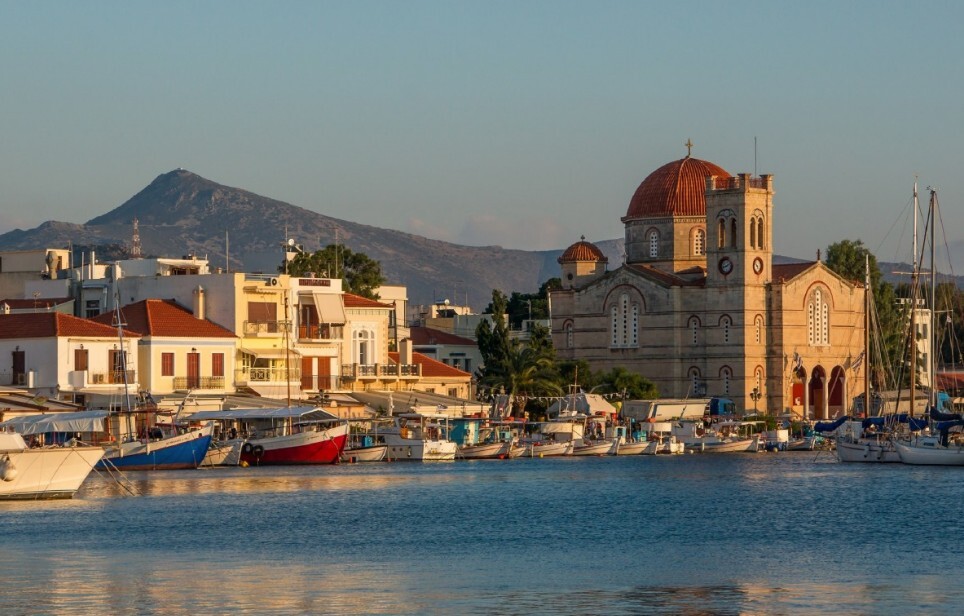
When: It is a destination suitable both in the winter and in the summer, although if you are a swimming type, you should choose to go there in the summer period for a cool dive in the sea.
Why: Greece is full of beautiful islands, but if you don’t have enough time to spend visiting one, or you only have one day and a few energy, Aegina is one of the closest ones to Athens and the ideal one to demonstrate the Greek style of living and the Greek island ambient.
What to do: Once you arrive at the port, take a walk around the city, and have a look at the cute little shops that spread across the streets offering traditional Greek products. Try the famous peanuts of Aegina, a product produced only on this island with many variants such as peanut paste and honey with peanut. At the same time there are dozens of taverns that are open all year long to serve the locals as well as the tourists with fresh fish and traditional Greek tastes. If you are history-lovers, the island is home to important historical sights such as the Temple of Aphaia, Paleochora, the prehistoric settlement of Kolona and its Archaeological Museum and the remains of Temple of Hellenic Zeus. Hundreds of tourists also arrive on the island for the imposing Monastery of Saint Nektarios, which is worth visiting so as to experience the sacred feeling of Greek Orthodoxy.
How to get here: Only one hour away from Piraeus port, Aegina is reachable by boat any time of the year, as there are frequent boats departing every day towards the island. The price of the ticket is 16 euros for a round-trip (you can also get a student discount- 50% in the above mentioned price).
Extra tip: If you have enough time or days, it would be perfect for you to take a short ride by boat to the wonderful small island of Agistri that is situated close by, and where you can go to one of the many beautiful small beaches with the turquaz waters and sit at the shade of a tree. It is only half an hour away from Aegina and it won’t cost you more than 10 euros. It is also ideal for camping, although it is prohibited.
Epidaurus

When: Situated in Peloponnese, only a two-hour-away drive from the capital, Epidavros is also a good choice for a one-day excursion. It is open all year around as it is one of the must-see places in Greece, but the most crowded months are the summer ones, with a bunch of festivals taking place at the scenic Greek theater.
Why: The archaeological site of Epidaurus is one of the most important of the ancient times, as it is reflecting the glamor of the Greek culture and it enchants your soul with it’s breathtaking beauty. The ancient town is standing over the land of Argolis, overlooking the Saronic Gulf. It is strategically surrounded by mountains that protect it from the strong winds, creating a natural embrace as well as a perfect climate. Although the Asklepieion was the main sanctuary of the small seaside town of Epidaurus, its reputation quickly surpassed the boundaries of Argolida and was globally considered the place where medicine was born.
What to do: Spend some time admiring the ancient theater, which parts a unique monument of the archaeological site of Asklepieion. Thanks to its excellent symmetry and acoustics, it is considered the finest example of an ancient theater in the whole world. It has the typical structure of a classical Hellenistic theater (concave, orchestra, stage) and it was built in two phases: the first in the late 4th and the second in the middle of the 2nd century. B. C. Pay a visit to the ruins of the Castle of Piad and the Archaeological Museum to see some of the first medical instruments. Take a historic walk around the Asclepieion, where you will see the temple of Asklepios, and walk up to the Avatos (or cemetery), the building in which the patients were hospitalized. Follow the beautiful route that connects New to Old Epidaurus between a dense pine forest above the sea. In the summer months, the most beautiful spot in the area is the harbor, but it is worth a relaxing stroll all year round, without the heavy crowds of summer. There are also fine restaurants in the village of Trachea, where you can try the famous local cheese dairies or to enjoy your lunch and coffee before you start your return trip.
How to get here: By urban bus starting from the Kifissos bus station. The ride lasts 2 hours and the price is around 30 euros round-trip. Remember to show your student card in order to get a student discount- 25% in the above mentioned price. During the summer festival, there are busses running every day at the price of 25 euros round-trip.
Arachova
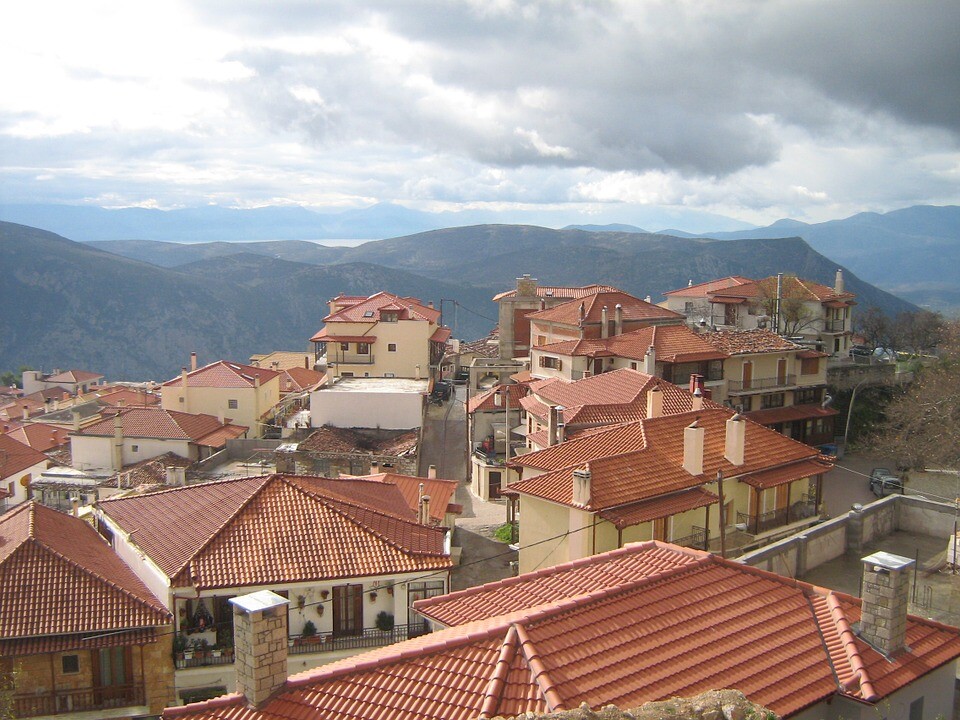
When: Ideally in winter, preferably on a day when there is snow, as Arachova is a winter destination, located on mountain Parnassos. Usually, people start visiting Arachova in late October, in order to ski or in the spring and autumn in order to hike in the national park or enjoy the nearby places that reach Galaxidi.
Why: Families, couples hand-in-hand, young groups of friends, hikers and nature lovers choose Arachova as their number one winter destination in Greece. And why not, since this place boasts a vivid nightlife, excellent traditional tastes and fabulous accommodation in traditional guesthouses. Arachova is a stone-built village with a cosmopolitan ambience, built at an altitude of 1.000 metres. People choose it because it owns not only a unique landscape, but also the best ski resort in Greece, for those who love to raise their adrenaline!
What to do: As a "rookie" with a traveler's mood you should start your trip wandering around the alleyways and walking up to the Rock of the Hour, the city mark that steals your gaze as soon as you enter the town. The ambitious ones can climb up the 264 stone steps to the church of Ai-Giorgis. Travellers use to spend their time to coffee places in Lakka square drinking a hot cup of coffee before rushing at one of the three ski resorts. At noon, you can enjoy a traditional meal with local products next to a tavern’s fireplace, while at night, although it is considered to be only a small town, there are many clubs where you can dance till the early hours. I would definitely suggest you an additional visit to Livadi, the Arabian village of Arachova, which has grown rapidly from taverns to luxurious cottages.
How to get here: By urban bus starting from the Liossion bus station. The ride lasts 2,5 hours and the price is 30 euros round-trip. Remember to show your student card in order to get a student discount- 25% in the above mentioned price.
Sounion
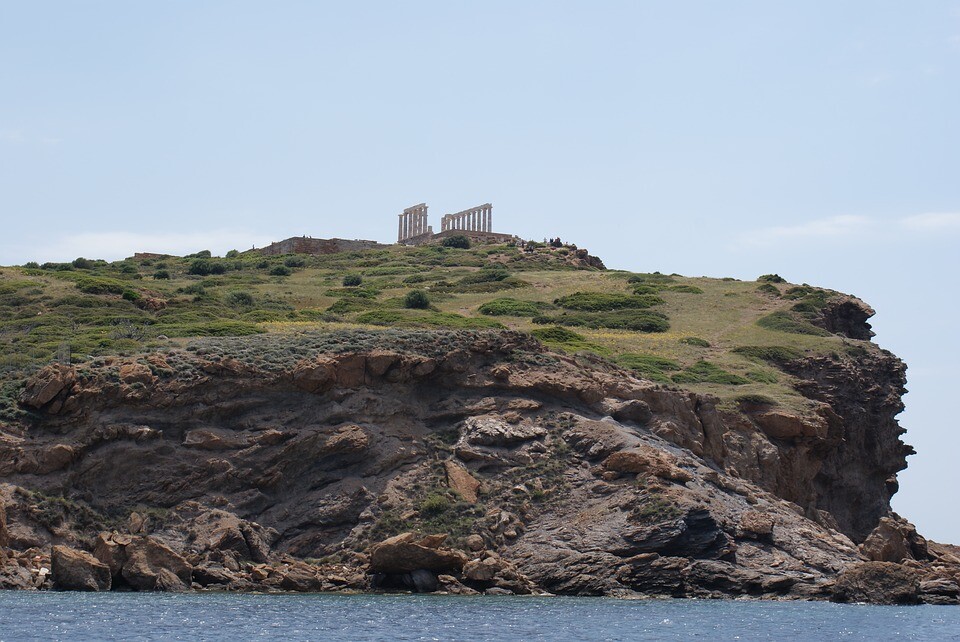
When: Sounio is one of the most important archaeological places you should visit during your stay in Athens. It is perfect for a Sunday excursion, on a sunny day, or even better, in the afternoon, at the time when the sun sets.
Why: Sounion, apart from the coastal route which is one of the most beautiful in all Attica, is known for the Temple of Poseidon, which is one of the most important archaeological sites of Attica. The unparalleled beauty and exquisite location of the temple, which was made between 444 and 440 BC, at the southeastern end of the cape, and believed to be a sacred location from the seafarers, impresses everyone who visits it. The charm of the landscape is so irresistible that even the famous poet and philhellene Lord Byron could not resist and wrote his name on one of the columns of the temple.
What to do: Leave your car behind and walk up to the temple in order to admire the majestic view and get the full sacred feeling of the place. Spend some time wandering around and then pay a short visit to the great Ionian Temple of Athena in order to admire its exquisite beauty. Beyond the temple, in Sounio you can enjoy beautiful natural landscapes and, of course, one of the most beautiful sunsets you have ever experienced in your life. From this privileged spot, you will have a panoramic view of the coastline and the neighbouring islands or even the mountains of the Peloponnese, weather permitting. After leaving the Sounion, you can drive a little further, to the neighbouring town and port of Lavrion, in order to enjoy fresh seafood or a relaxing cup of coffee.
How to get here: By urban bus starting from Victoria Square. The one-way trip will last up to 1 hour and the ticket will cost you around 5 euros. Remember to show your student card in order to get a student discount- 25% in the above mentioned price.
One day cruise to Hydra, Poros and Aegina islands
When: It is ideal to experience this excursion in the summer, as you will have enough time not only to see the islands but also to have a quick dive in the sea.
Why: Being in Greece, there is nothing more ideal than experiencing the feeling and tradition of the Greek islands. These three are the ones that offer the most authentic Greek feeling, at the nearest proximity to Athens.
Hydra is a picturesque small island that had a great role during the Greek Revolution of 1821, as well as in the modern history. The heritage, the vivid tradition and the peculiarities of the place make Hydra one of the most popular tourist destinations close to Athens.
Poros is known for its romance and tranquillity. It is full of neoclassical houses and yachts, and its inhabitants are, like all islanders in Greece, hospitable and dignified. It is an island full of pine trees that reach its sandy beaches with crystal-clear waters.
Aegina is the last stop, as it was one of the islands that participated in the battle of Salamis against the Persians and during the Classical era is the city of the Ahaic Confederacy. Today it is the second largest in size, population and growth island of the Argosaronic and the island suburb of Piraeus.
What to do: The cruise will take you to the three islands, where you will be provided with enough time to walk across the narrow alleyways and enjoy the colourful houses and the picturesque landscapes. You can also sit at one of the numerous places in order to enjoy a Greek coffee or a frappe, or even grab a quick bite. You can take a walk at the beautiful docks, and watch the luxurious yachts that are driven ashore at the ports. There are also many beaches on the islands, where you can swim in order to eliminate the summer heat. Don’t forget to take a walk with the donkey on Hydra, and buy the famous traditional peanuts of Aegina or other small souvenirs.
How to get here: There are boats starting every morning from Floisvos Port, offering an all-day cruise in the Argo Saronic Gulf, that includes in the price not only the transfers to three beautiful Greek islands, but also a meal in a buffet and a Greek party. The journey starts at 8.00 in the morning and you usually come back at 19.30 in the afternoon, and the price is different in every company, ranging from 49-55 euros for the whole trip.
Chalkida city
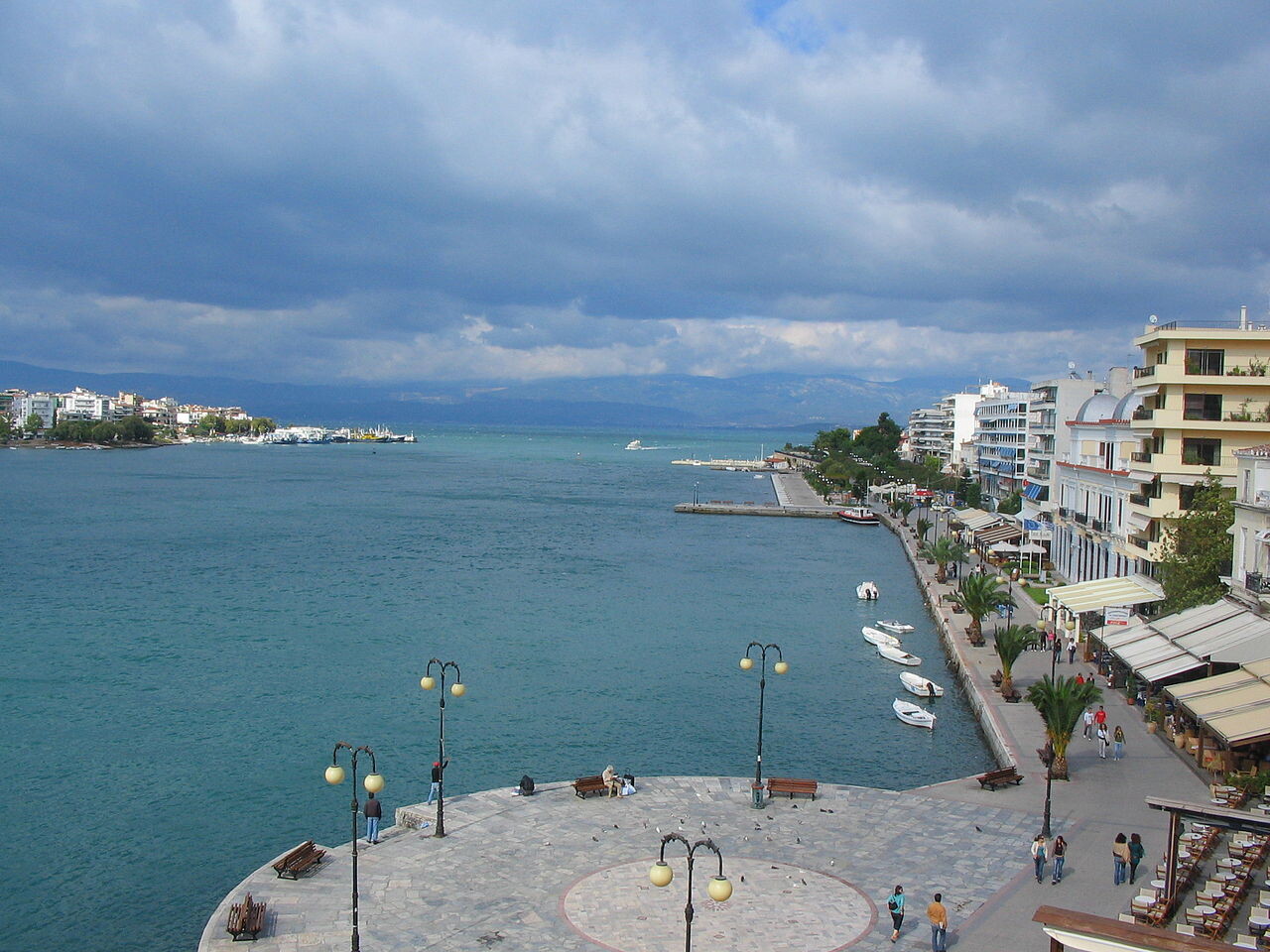
When: Prefer to go in the spring or in the summer. Just one hour from Athens by bus, Chalkida is the ultimate destination for one-day excursions to get away from the madness of the city.
Why: Spacious and vibrant, Chalkida is know not only for the beautiful city centre that is worth walking, but also for the fresh seafood that is served in its tavernas, making it feel like it’s summer! In the waters of this city, there is a unique phenomenon called Euripus tide. The waters change direction every 6 hours and a change of direction takes 8 minutes to remain stationary except for the two equinoxes (21 March and 21 September) when the waters change direction without waiting for 8 minutes. Finally, twice during the lunar month (New Moon and Full Moon), their movements become completely disorderly without obeying a regular pace. You can easily see it just by staring at the waters on any bridge of the city.
What to do: Take a relaxing walk around the city and it will reward you, as Chalkida has many beautiful historical buildings, such as the Red House, which was built in 1884, and the Statue of the Evian Studies Society. Also, there is the mansion hosting the city hall with elements of baroque and Italian eclecticism. For fresh fish, coffee, drink or just for a long relaxing walk, the full of life of Chalkis beach invites you to stroll along the waterfront beside fishermen and street-wandering artists. The street is full of taverns, each with its own style, that serve fresh seafood snacks.
How to get here: By urban bus starting from the Liossion bus station. The ride lasts 1 hour and the price is around 16 euros round-trip. Remember to show your student card in order to get a student discount- 25% on the above-mentioned price.
Monemvasia
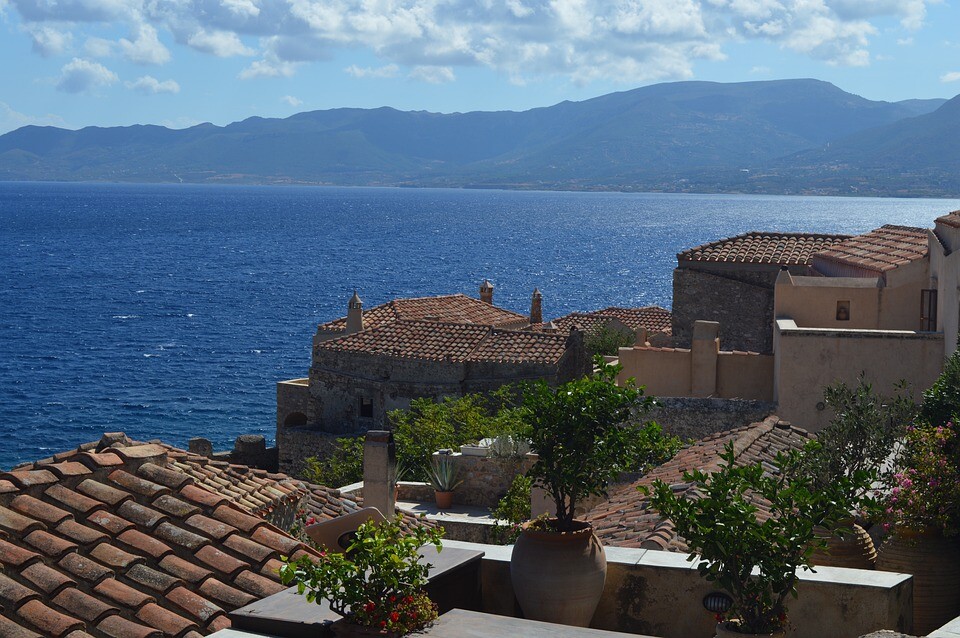
When: Although it is situated next to the sea, it is suitable to come here any time of the year. Just make sure you will choose a sunny day, as you have a lot of walking to do! It might be 2.5 hours away from Athens, but it is ideal for a one-day trip.
Why: Between the medieval walls of Monemvasia exists one of the most well-preserved and lively castles in Greece. Dozens of churches, wealthy merchant mansions, fountains, hammam and swampy cobbled paths are preserved in a remarkably good condition, preserving the atmosphere and medieval feeling of this old settlement, which from the Byzantine era until the 19th century played an important role in the history of the whole region.
What to do: Inside the castle there is no car access, so be prepared for heavy walking. The central cobbled path that starts from the castle gate leads you to the most important sights but also to the restaurants, bars and shops that are gathered along it. Take a walk at the cobbled path starting from the central square with the cannon and the Archaeological Museum to the Upper Castle or Goulas, the second settlement. It is worth walking on the hillside between the pomegranates only to admire the charming view from the walls of the Upper Castle, in front of the imposing church of Fragrance Sophia. The new city, Gefira, is no different from any newly built beach resort, except perhaps from the fact that it offers outstanding views of the Castle. Here you can have a traditional meal at a restaurant or just a coffee before preparing for your way back to Athens. If you have time for a quick dive in order to restore some energy for your trip, then the sandy beach is particularly popular.
How to get here: By urban bus starting from the Kifissos bus station. The ride lasts 2,5 hours and the price is around 56 euros round-trip. Remember to show your student card in order to get a student discount- 25% on the above-mentioned price.
- Continue to Athens in three days- What to see in Athens in three days
- Return to Athens Beaches - The best beaches in Athens
Photo gallery
Content available in other languages
Want to have your own Erasmus blog?
If you are experiencing living abroad, you're an avid traveller or want to promote the city where you live... create your own blog and share your adventures!
I want to create my Erasmus blog! →






















Comments (0 comments)